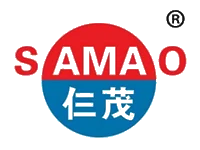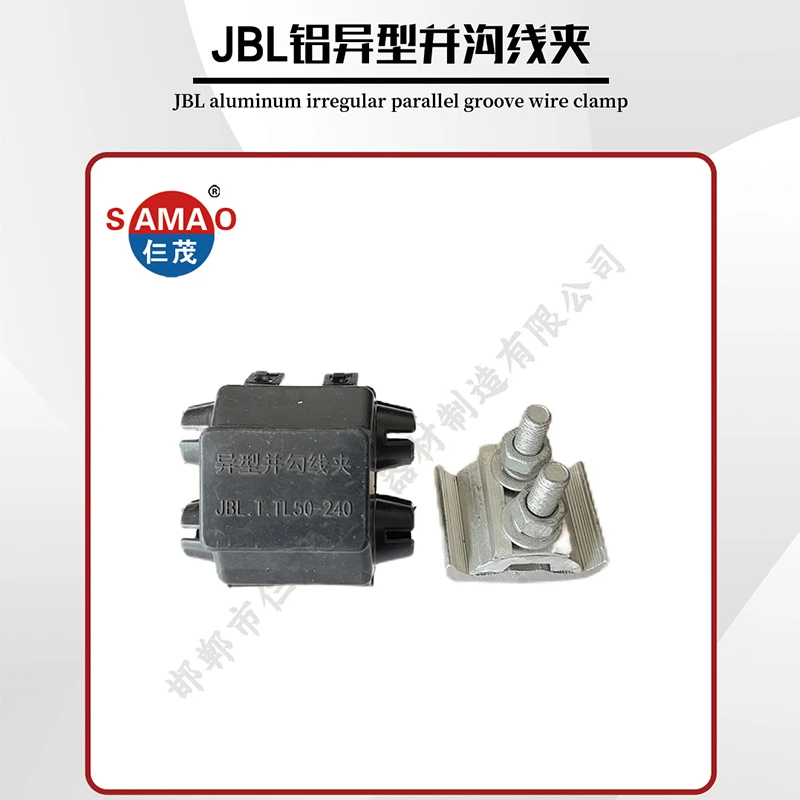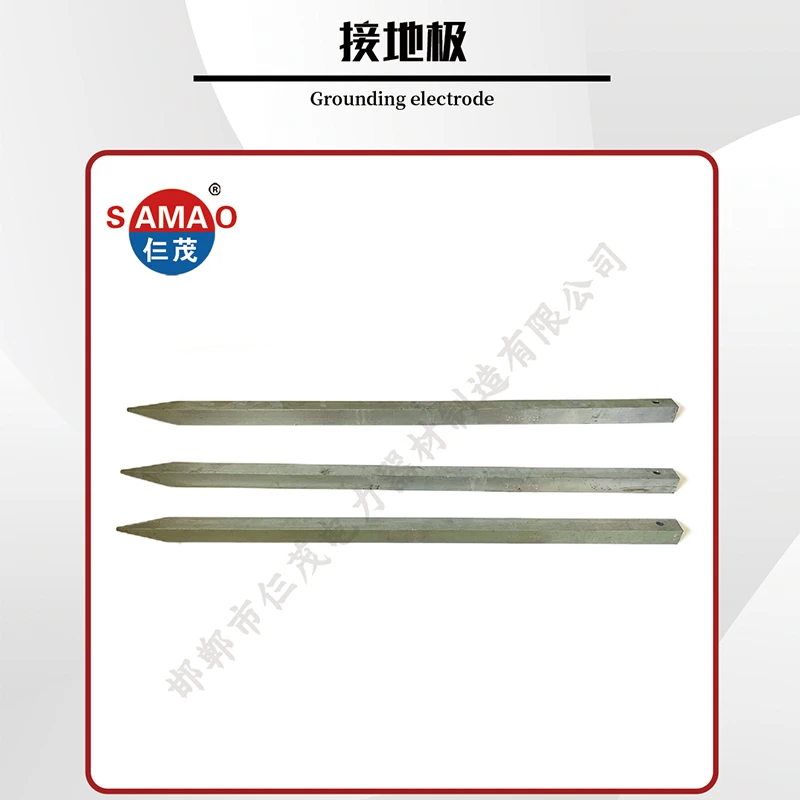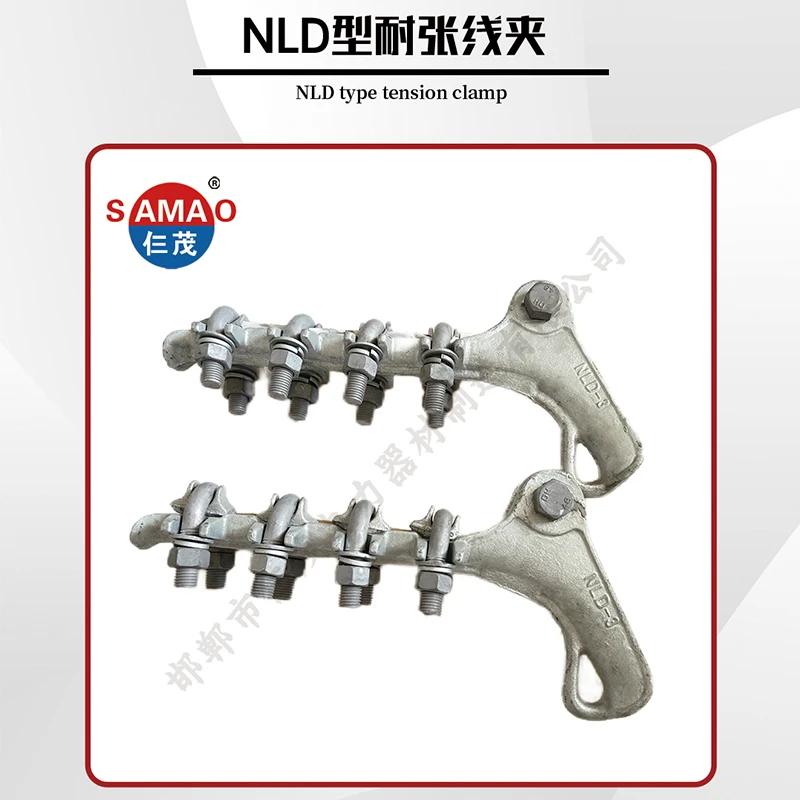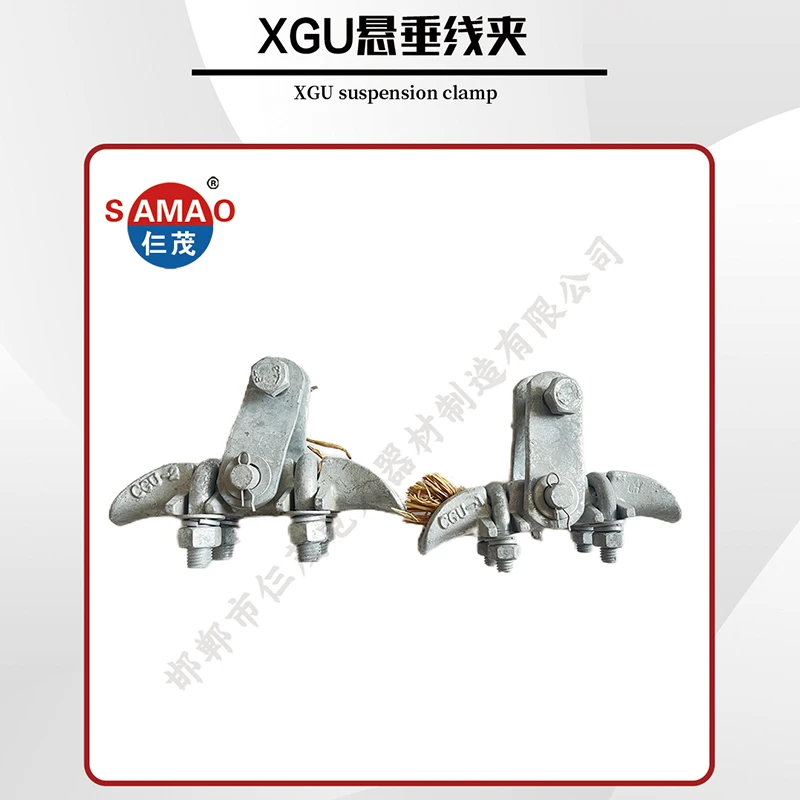Wholesale Suspension Clamp: Steel, Angle & Preformed
Your definitive resource for understanding, sourcing, and deploying high-performance suspension clamps. From technical specifications to trusted suppliers, we cover everything you need to ensure grid reliability and efficiency.
Explore Our Suspension Clamp SolutionsIndustry Trends: The Evolving Demand for Suspension Clamps
The global energy landscape is undergoing a monumental shift. With the rapid expansion of renewable energy sources, grid modernization projects, and increasing electricity demand, the need for robust and reliable power transmission hardware has never been greater. At the heart of this infrastructure are suspension clamps, critical components for securing overhead conductors. Market analysis indicates a steady compound annual growth rate (CAGR) of 5.2% for the overhead line hardware market, projected through 2028, with the Asia-Pacific region leading the demand due to extensive infrastructure development.
Global Suspension Clamp Market Growth (Projected)
Material Usage in Modern Suspension Clamps
This growth is driven by several key factors: aging infrastructure in developed nations requiring upgrades, new grid construction in developing economies, and the technical demands of high-voltage direct current (HVDC) lines. This creates a significant opportunity for sourcing wholesale suspension clamp solutions that offer both economic value and superior performance.
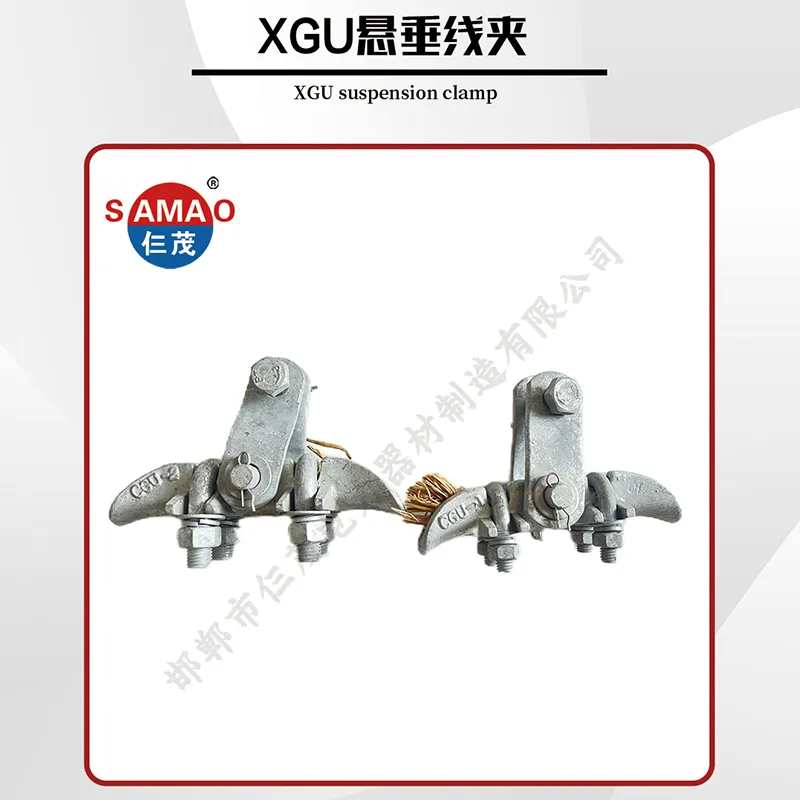
Core Technical Parameters: What Defines a Quality Suspension Clamp?
Choosing the right suspension clamp is not merely about finding a component that fits; it's about ensuring long-term operational integrity. A deep understanding of technical parameters is crucial for engineers and procurement managers. These specifications, governed by international standards like IEC 61284 and ANSI C135.1, dictate the clamp's performance under extreme mechanical and environmental stress.
Expert Insight: The term 'Slip Strength' is a critical parameter. It's defined as the tensile load at which the conductor permanently slips inside the clamp. A minimum slip strength, typically between 5% and 7% of the conductor's Rated Tensile Strength (RTS), is required to prevent conductor damage during unbalanced load events, such as ice shedding or broken wires in an adjacent span.
Comprehensive Specification Table for Wholesale Suspension Clamps
When sourcing wholesale suspension clamp units, this table serves as a vital checklist. We've compiled typical parameters for standard and specialized clamps, including the versatile angle suspension clamp and high-strength steel suspension clamp.
| Parameter | Standard Suspension Clamp (Type XG) | Angle Suspension Clamp (Type XGJ) | Preformed Suspension Clamp | Technical Significance |
|---|---|---|---|---|
| Applicable Conductor (mm²) | 35-500 | 50-240 | 70-400 | Ensures a proper, non-damaging fit for the specific ACSR, AAAC, or AAC conductor. |
| Material | Aluminum Alloy, Galvanized Steel | Malleable Iron (Hot-Dip Galvanized) | Aluminum Alloy, Steel Strands | Determines corrosion resistance, strength, and weight. Galvanization must meet ASTM A153. |
| Ultimate Tensile Strength (UTS) (kN) | ≥70 kN | ≥90 kN | ≥60 kN | The maximum load the clamp can withstand before failure. A key safety metric. |
| Recommended Span (m) | Up to 200m | Up to 400m (for turning angles) | Up to 300m | Indicates the maximum distance between towers for which the clamp is designed. |
| Max. Turn Angle | 30° - 60° | Critical for line routing. An angle suspension clamp is purpose-built for this. | ||
| Slip Strength (% of RTS) | 5% - 7% | 10% - 15% | ≥17% | Prevents conductor slippage under imbalanced longitudinal loads. |
| Governing Standard | IEC 61284, JB/T 5333 | IEC 61284, National Standards | Q/GDW, Manufacturer Specific | Ensures interoperability, quality, and safety compliance. |
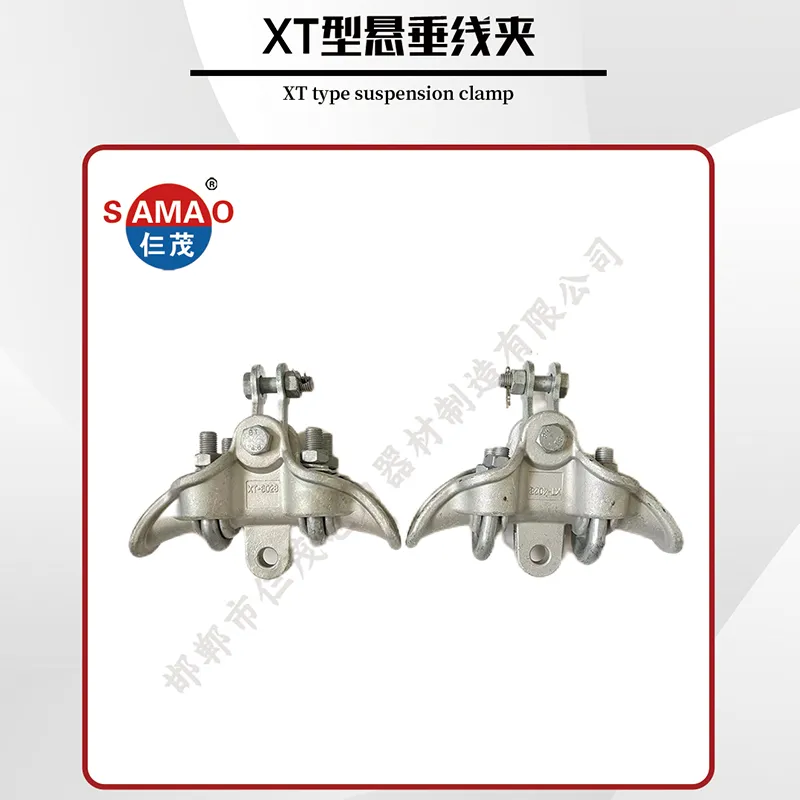
From Raw Material to Grid-Ready: The Manufacturing Process Explained
The reliability of a steel suspension clamp is a direct result of a meticulous, quality-controlled manufacturing process. As leading suspension clamp suppliers, we believe in transparency. Below is a detailed breakdown of how our products are made, ensuring they meet and exceed the most stringent industry standards like ISO 9001:2015.
Step 1: Raw Material Selection & Testing
It all starts with certified materials. We use high-strength aluminum alloy and structural grade steel. Each batch undergoes spectrographic analysis to verify its chemical composition and mechanical properties, ensuring it meets standards like ASTM B209 for aluminum and ASTM A36 for steel.
Step 2: Forging & Casting
Clamp bodies and keepers are forged or precision cast. Forging aligns the material's grain structure, significantly increasing its Ultimate Tensile Strength (UTS) and fatigue resistance. This process is critical for components subjected to high dynamic loads.
Step 3: Precision CNC Machining
Critical surfaces, such as the conductor groove and bolt holes, are machined using computer numerical control (CNC) centers. This guarantees dimensional accuracy to within ±0.05mm, ensuring a perfect fit, uniform pressure on the conductor, and minimal corona effect on EHV lines.
Step 4: Surface Treatment: Hot-Dip Galvanization
For all steel components, we perform hot-dip galvanization according to ASTM A153. This process creates a thick, metallurgically bonded zinc coating, providing superior corrosion protection with a typical service life exceeding 30 years, even in harsh industrial or coastal environments.
Step 5: Assembly & Quality Control
Components are assembled with high-strength bolts (Grade 8.8 or higher). Each completed clamp undergoes a rigorous quality control protocol: visual inspection, dimensional checks, and batch testing for slip strength and tensile strength in our in-house ANSI-certified lab.
Diverse Applications: Where Suspension Clamps Power Our World
Suspension clamps are ubiquitous in overhead line construction, but their specific design varies based on the application. Understanding these scenarios is key to selecting the right product from suspension clamp suppliers.
Power Transmission & Distribution
The primary application. Used on transmission towers and distribution poles to suspend conductors like ACSR and AAAC. A preformed suspension clamp is often preferred for OPGW (Optical Ground Wire) due to its gentle grip and excellent vibration damping.
Railway Electrification
Crucial for catenary systems that power electric trains. These clamps must withstand constant vibration and dynamic loads. Our steel suspension clamp series is designed for high-strength and fatigue resistance, making it ideal for this demanding sector.
Telecommunications
Used for suspending aerial fiber optic cables (ADSS, OPGW). These applications require clamps with precisely engineered grooves and neoprene linings to prevent signal attenuation caused by excessive clamping pressure.
Industrial & Mining
In corrosive environments like petrochemical plants or coastal salt spray zones, specially treated clamps with enhanced anti-corrosion coatings are essential. Our dual-layer galvanization and optional stainless steel hardware offer an extended service life in these aggressive atmospheres.
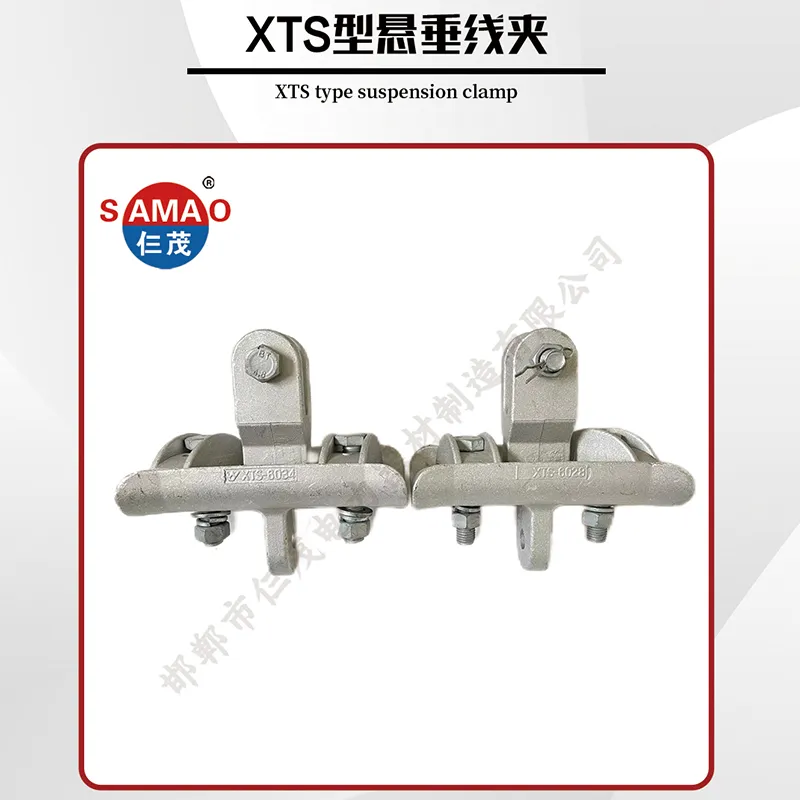
Choosing Your Partner: SamaoEP vs. Generic Suppliers
When you're looking for a wholesale suspension clamp partner, the choice goes beyond price. It's about securing a supply chain that guarantees quality, reliability, and support. Here’s how SamaoEP stands apart from generic traders or less specialized manufacturers.
Performance Benchmark: SamaoEP vs. Industry Average
| Feature | SamaoEP (Specialist Manufacturer) | Generic Supplier/Trader |
|---|---|---|
| Material Certification | ✓ Mill-Test Reports (MTRs) for every batch. Spectrographic analysis. | Often unverified or relies on third-party claims. |
| Manufacturing Process | ✓ In-house forging, CNC machining, and controlled galvanization. | Outsourced to multiple factories with variable quality control. |
| Quality Assurance | ✓ ISO 9001 certified. 100% dimensional checks and batch-wise mechanical testing. | Basic visual inspection, inconsistent testing protocols. |
| Technical Expertise | ✓ In-house engineers for design validation and customization. | Sales staff with limited technical product knowledge. |
| Customization | ✓ Full capability for custom designs (e.g., non-standard angles, special materials). | Limited to standard, off-the-shelf products. |
| Traceability | ✓ Full traceability from raw material to finished product with unique batch codes. | Minimal or no traceability. |
| Warranty & Support | ✓ Comprehensive multi-year warranty with direct engineering support. | Limited warranty, difficult to claim, no technical support. |
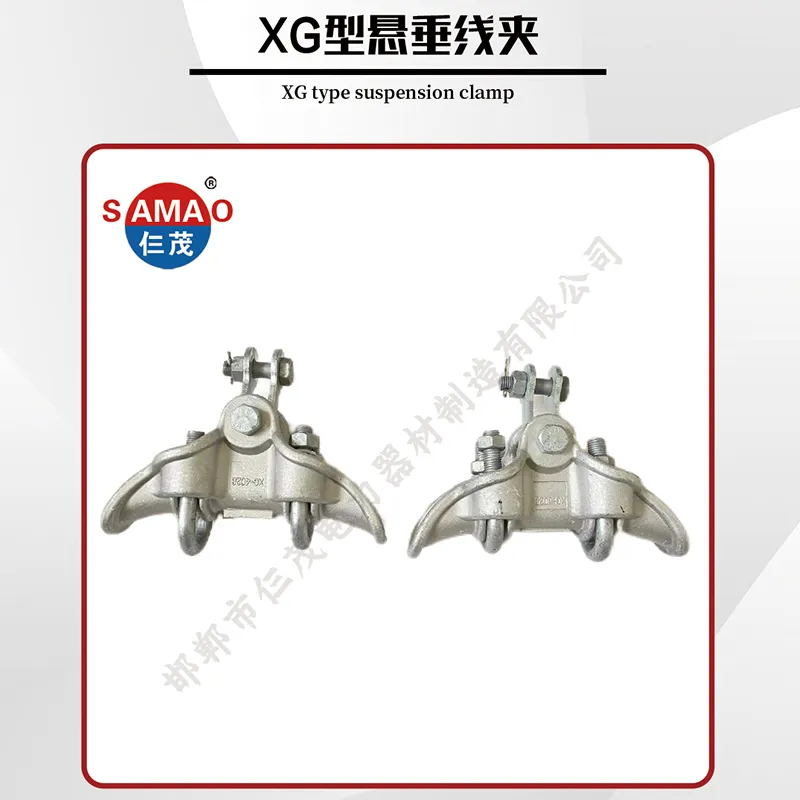
Tailored Solutions: Custom Suspension Clamp Engineering
Standard solutions don't always meet the unique challenges of a project. Whether it’s an unusual line deviation, a highly corrosive environment, or compatibility with a proprietary conductor, our engineering team is equipped to deliver bespoke solutions. Sourcing a custom wholesale suspension clamp is a straightforward process with us.
- Consultation: We begin by understanding your specific requirements: conductor type, span length, environmental conditions, and mechanical load.
- Design & Modeling: Using SolidWorks and FEA (Finite Element Analysis) software, we design and simulate the clamp's performance under your specified load conditions. This is especially crucial for a custom angle suspension clamp.
- Prototyping: A physical prototype is manufactured for your approval and for in-house testing to validate the design.
- Mass Production: Once the prototype is approved, we move to full-scale production under our stringent ISO 9001 quality system.
- Documentation & Support: Each custom order is delivered with full technical documentation, including drawings, material certifications, and test reports.
Real-World Experience: Application Case Studies
Case Study 1: 110kV Transmission Line Upgrade in a Coastal Region
Client: A Southeast Asian National Utility
Challenge: An existing 110kV line required upgrading, but the coastal location presented a high risk of saline corrosion, which had caused premature failure of previous hardware. The client needed a solution with a 30+ year lifespan.
Solution: We provided a custom steel suspension clamp (Type XG) featuring an enhanced hot-dip galvanization thickness of 120μm (standard is 86μm) and Grade 316 stainless steel cotter pins. This provided superior resistance to chloride-induced corrosion.
Outcome: After 5 years in service, annual inspections show negligible corrosion, projecting a service life well beyond the 30-year requirement. The client has since standardized our clamp for all coastal projects, demonstrating trust built on proven experience.
Case Study 2: High-Angle Deviation on a Mountainous Terrain Project
Client: A European Power Contractor
Challenge: A new 220kV line through a mountainous region required a line deviation of 45° at a key tower, exceeding the capacity of standard suspension clamps.
Solution: Our engineers designed a specialized angle suspension clamp assembly. The design used a trunnion-style clamp body for smooth articulation and a larger, reinforced keeper to distribute forces evenly and prevent stress concentration on the conductor at the high turn angle.
Outcome: The custom clamp was successfully installed, enabling the planned line route and avoiding the costly construction of an additional tower. The project was completed on time and under budget, highlighting the value of expert, customized hardware solutions.
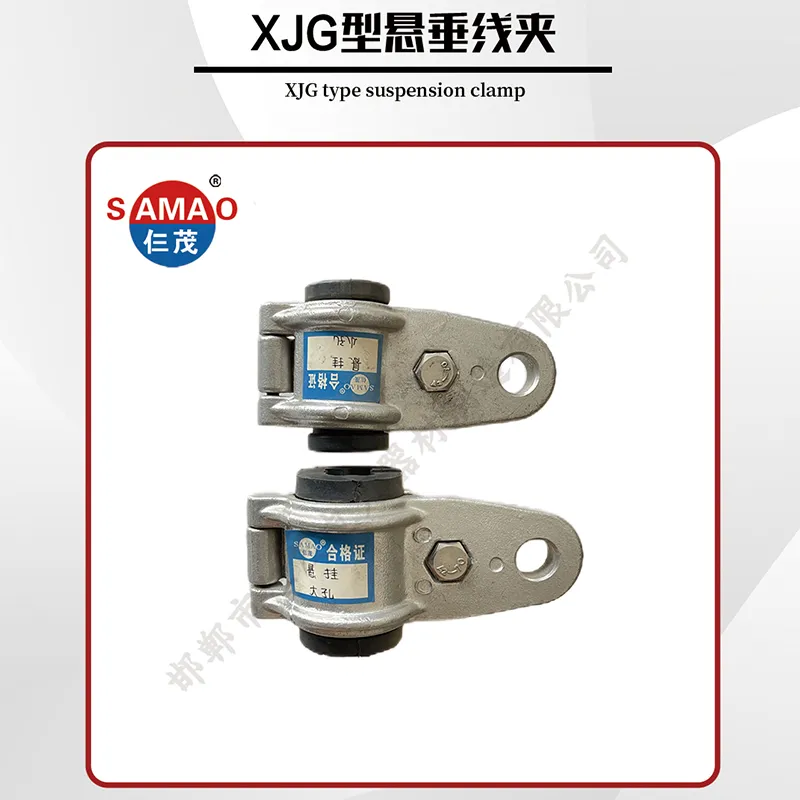
Our Commitment to Trust and Quality
Trust is the foundation of any long-term business relationship. At SamaoEP, we build trust through transparency, consistency, and unwavering support. When you source wholesale suspension clamp products from us, you're not just buying a part; you're investing in peace of mind.
- Industry Certifications: Our manufacturing facilities are ISO 9001:2015 certified, and our products can be manufactured to comply with IEC, ANSI, BS, and AS standards.
- Guaranteed Delivery Times: We understand project timelines are critical. For standard orders, our typical lead time is 4-6 weeks. Expedited options are available.
- Comprehensive Warranty: We offer a standard 3-year warranty on all our suspension clamps against manufacturing defects, with extended warranty options available.
- Dedicated Customer Support: Our support team includes engineers who can assist with product selection, installation guidance, and troubleshooting. We're available via email, phone, and video conference.
Frequently Asked Questions (FAQ)
For highly corrosive environments like coastal areas (salt spray) or industrial zones (acid rain), the best material choice is hot-dip galvanized steel with a thick zinc coating (≥86μm per ASTM A153). For extreme conditions, using stainless steel (Grade 304 or 316) for fasteners and cotter pins is highly recommended. Aluminum alloy clamps are naturally corrosion-resistant but may be susceptible to galvanic corrosion if not properly isolated from steel tower hardware.
A suspension clamp's primary role is to support the vertical weight of the conductor on tangent towers, allowing the conductor to 'slip' under imbalanced loads to prevent damage. A tension clamp, or dead-end clamp, is designed to terminate the conductor and hold its full mechanical tension at angle towers, dead-end towers, or at the start/end of a line. It is designed for 100% of the conductor's Rated Tensile Strength (RTS).
The correct size is determined by the outer diameter of your conductor. Each clamp model specifies a range of conductor diameters it can accommodate (e.g., 18.6mm - 21.8mm). Using a clamp that is too small will damage the conductor strands, while one that is too large will not provide adequate slip strength. Always refer to the conductor's datasheet and the clamp's specification sheet.
Ultimate Tensile Strength (UTS), also known as Breaking Load, is the maximum longitudinal pulling force the clamp assembly can withstand before any component fractures or fails. It's a critical safety metric and is typically specified in kiloNewtons (kN). For safety, the clamp's UTS must be significantly higher than the maximum expected working load on the line.
Yes, we design and manufacture our suspension clamps to meet or exceed the requirements of IEC 61284 ("Overhead lines - Requirements and tests for fittings"). This international standard specifies the materials, mechanical performance (like slip tests and UTS), and testing procedures for fittings, ensuring global compatibility and safety.
A standard suspension clamp is designed for tangent towers where the line is straight (deviation angle angle suspension clamp is robustly designed to handle larger line deviation angles (typically 30° to 60°). It features a more rugged body, a keeper designed to prevent conductor lift, and often a pivoting (trunnion) mechanism to reduce stress on the conductor and clamp.
The service life is highly dependent on the environment. In a mild, rural environment, a properly galvanized clamp (per ASTM A153) can last over 50 years. In an industrial or marine environment, the lifespan might be 25-30 years. We can provide clamps with thicker zinc coatings or alternative materials to meet specific lifespan requirements for your project.
References & Further Reading
Our commitment to expertise is backed by continuous engagement with industry knowledge and standards. The information presented is aligned with findings and best practices from leading industry bodies and academic research.
- IEC 61284: "Overhead lines – Requirements and tests for fittings." International Electrotechnical Commission. This standard forms the basis for our quality and testing protocols. (View Standard)
- CIGRÉ Technical Brochure 693: "Compact AC Transmission Lines." This document discusses modern overhead line design, where specialized hardware like suspension clamps plays a critical role. (Access on e-cigre.org)
- "Corrosion of Galvanized Steel in Transmission Line Applications," Journal of Materials in Civil Engineering. This field of study informs our material selection and coating specifications for enhanced durability. (Academic journals on materials science provide extensive data on this topic).
- Eng-Tips Forums - Power Transmission & Distribution Engineering: A professional forum where engineers discuss real-world challenges with line hardware, including clamp selection and failure analysis. (Visit Forum)
